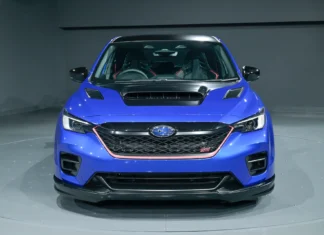
The 2016 Honda Pilot has undergone a dramatic styling makeover. Gone is the big boxy grille and chunky looking fenders. It also looks longer and lower, because it actually is. The Pilot shaves an inch off the top and adds three inches in length overall, with roughly two inches between the wheels and an inch of extra rear overhang.
Driving the all-new 2016 Honda Pilot is a significant step over the previous generation Pilot that was slow, heavy, cumbersome and long past-due for an update. The new 2016 Pilot is a clear departure from the old model and has a refined set of road manners that make it much easier to drive.
Fuel efficiency is up this year with both the standard 6-speed automatic and optional 9-speed automatic transmissions. Honda says highway fuel economy is up 2 mpg. Now the front-wheel drive Pilot can get up to 27 mpg and all-wheel drive version is estimated at 26 mpg.
But Honda has done so much more to make the new Pilot a fuel economy leader. Drivers seeking all-weather capability can rest easy knowing the super handling all-wheel drive (SH-AWD) system was taken from the previous generation Acura MDX and adapted to the 2016 Pilot.
Called i-VTM4 it, sends 100 percent of the power to the front wheels but can send up to 70 percent to the rear when needed and all of that can be delivered to just one rear tire to push you through a corner.
To help make the most of i-VTM4, Honda borrowed a page from the leaders in the off-road segment and added what it calls an Intelligent Traction Management button on the center console. This lets the driver chose different pre-set models for the terrain. Front-wheel drive models get a choice of Normal or Snow, while all-wheel drive versions let you select from Normal, Mud, Sand and Snow modes.
Here is a demonstration of using the Honda Pilot’s all-wheel drive system on a steep and slippery hill climb rolling on all-season tires:
























